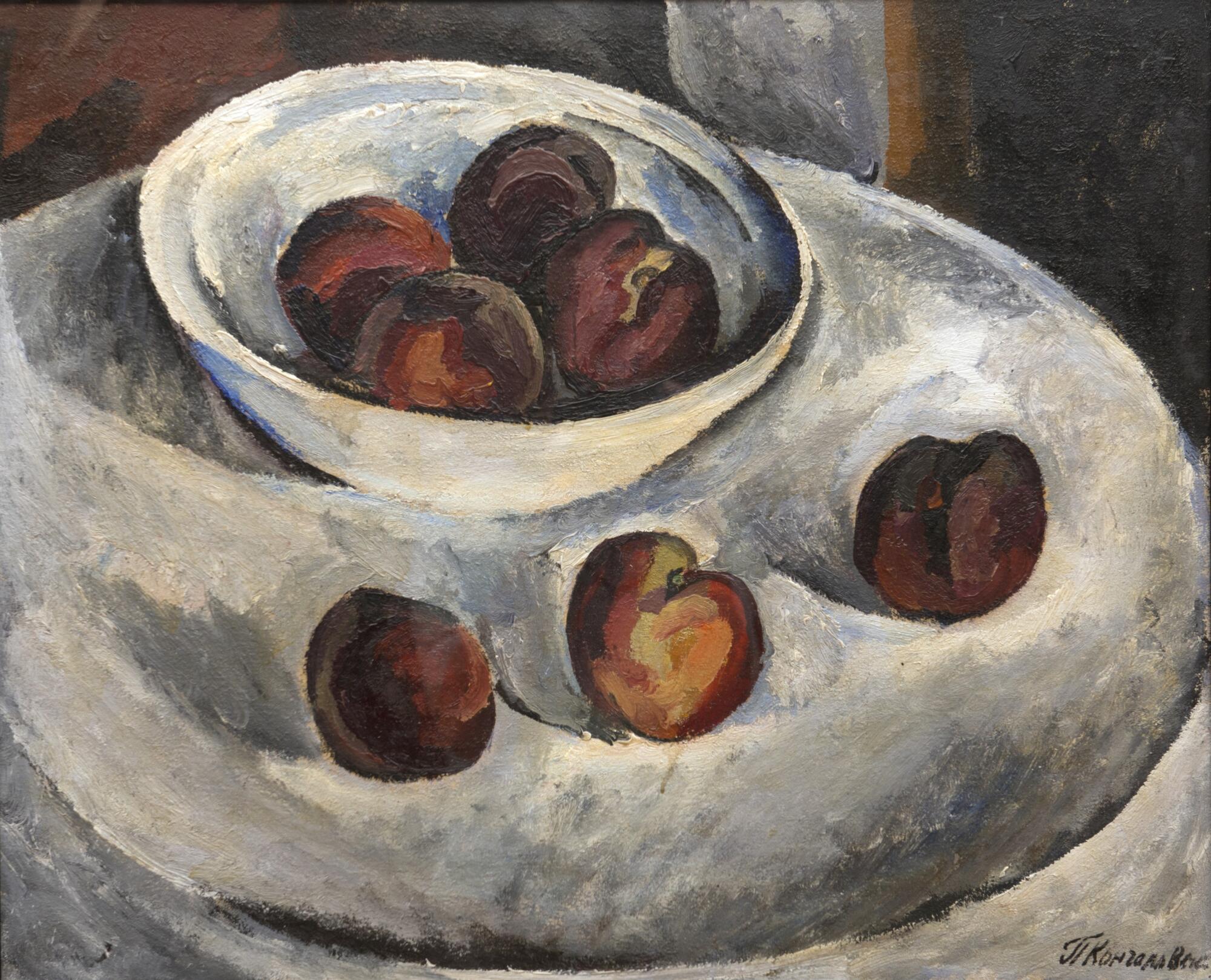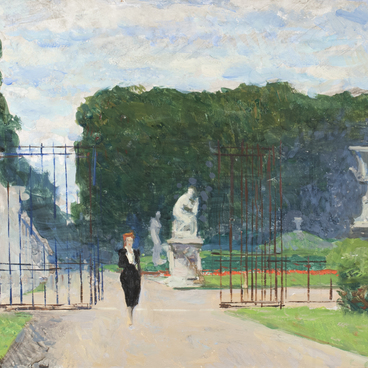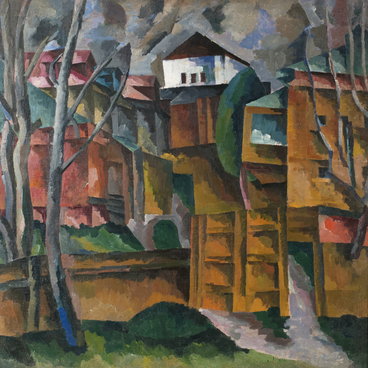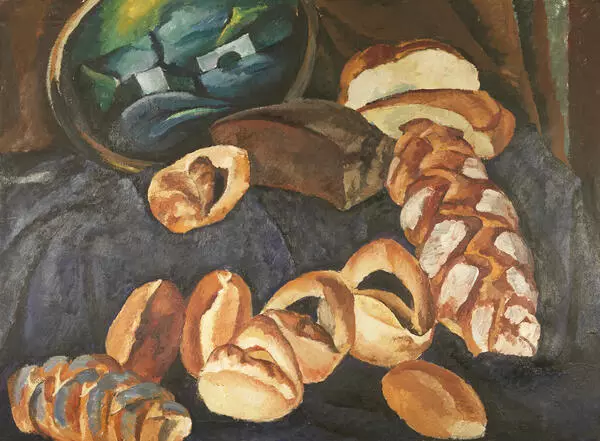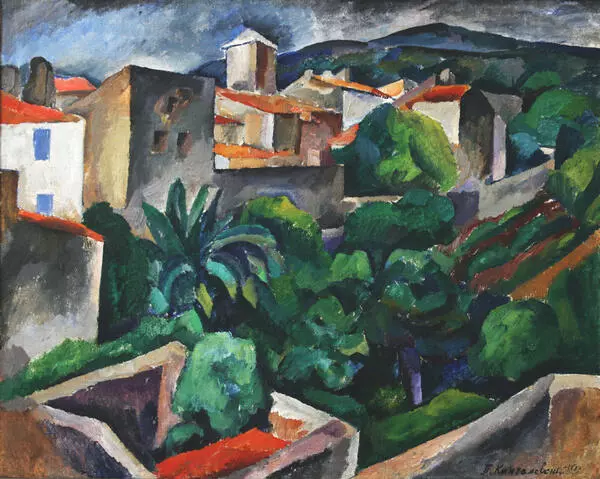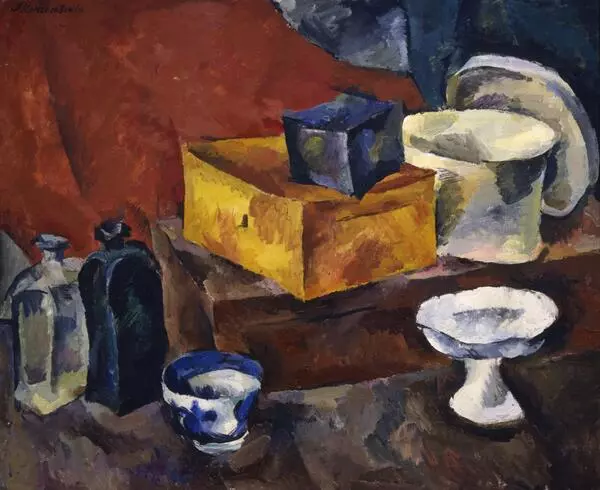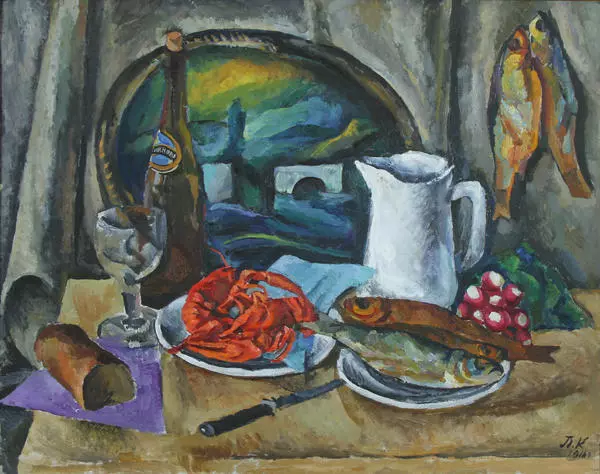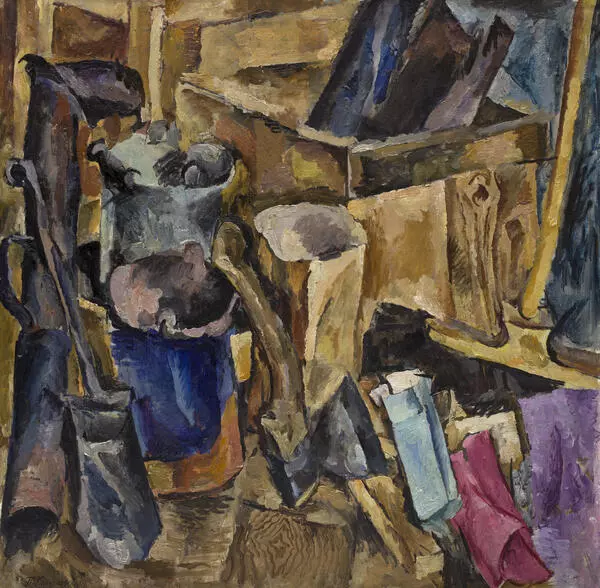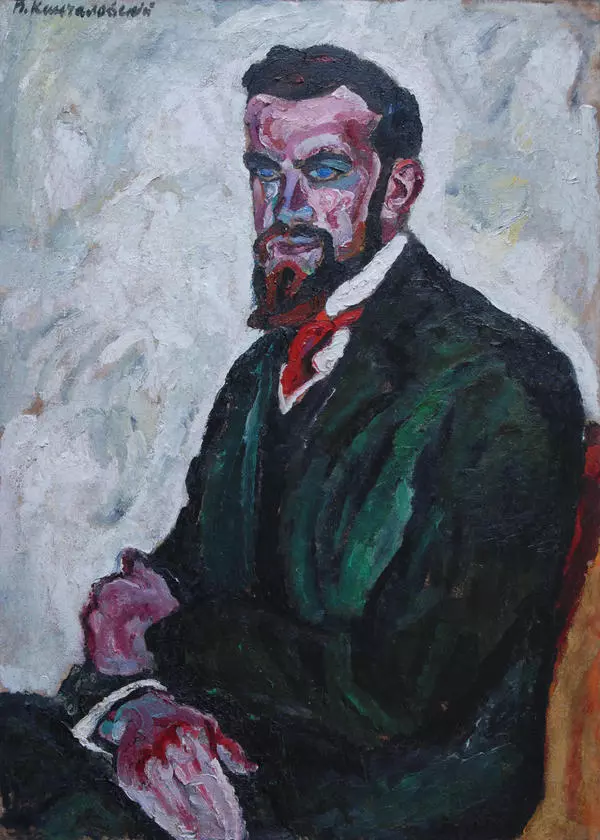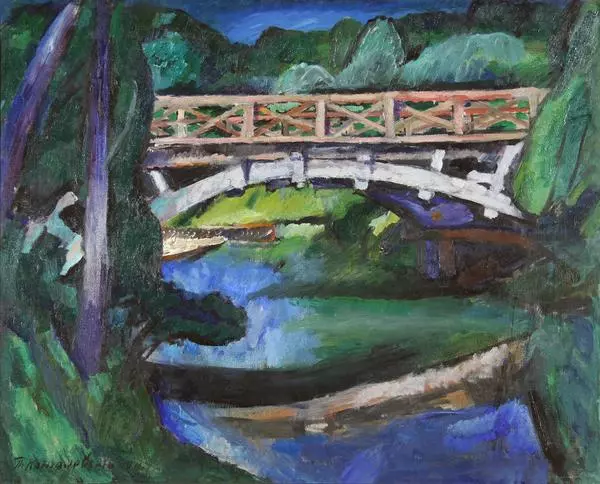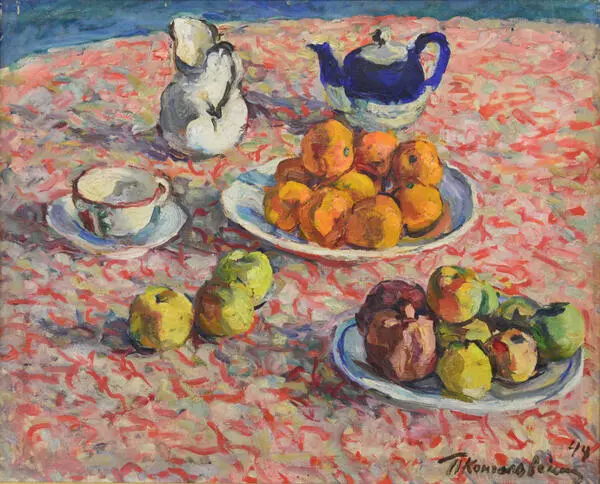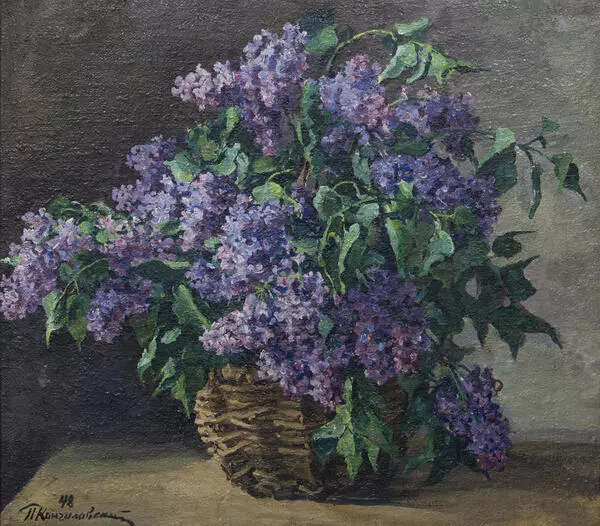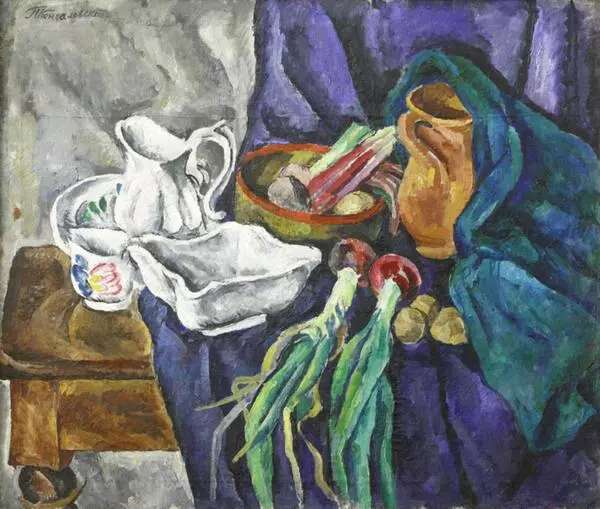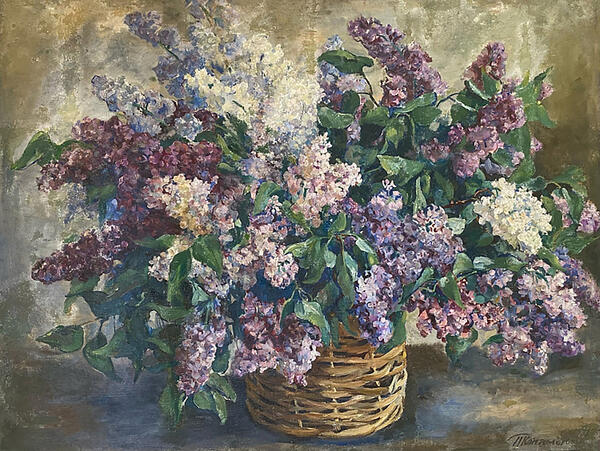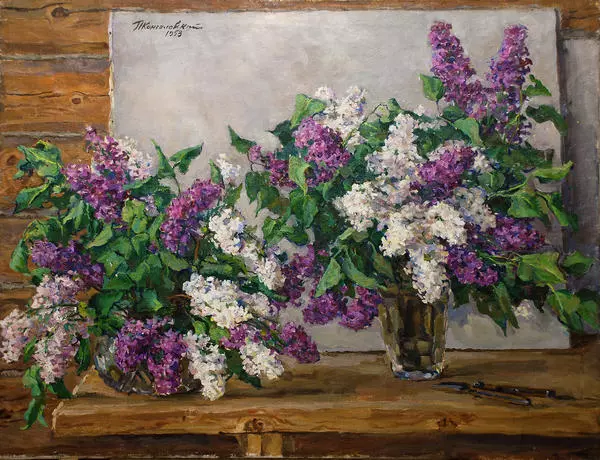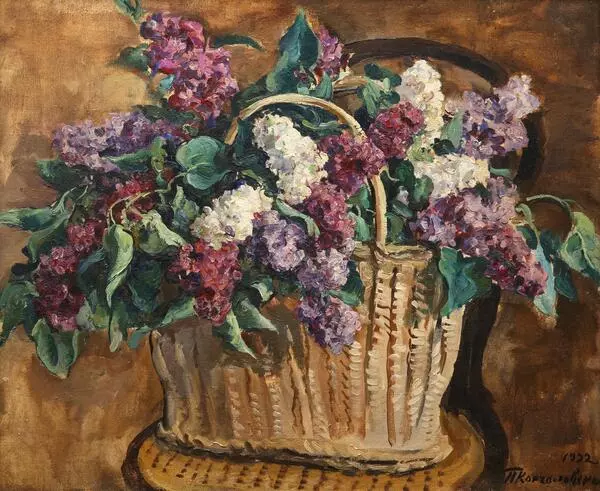The 1900s – 1910s were the heyday of still lifes in Russian painting. The genre of still life, which, as contemporaries imagined it, excludes the elements of plot and narration, and focuses the viewer’s attention on the “simplest” qualities “inherent” in the phenomena of the surrounding world, became the form that most directly appealed to nature - a means to creatively analyze reality. Still lifes are now set to resolve narrow, purely perfunctory objectives: revealing the texture and shape of objects, building up a color arrangement, and creating original figurative solutions. At the same time, the conceptual essence of the object is not interesting for
the artist, and the internal “narrative” link between objects is shattered.
Konchalovskiy, like other artists in the early twentieth century, uses still life as a field for formalistic, stylistic searches.
Peaches (1913) is quite demonstrative of the creativity of Konchalovskiy’s ‘Jack of Diamonds’ period, when he was fascinated by cubism, and not as much interested in the beauty of what he depicted as in the expressiveness of the image. Following Cezanne, Konchalovskiy aspired to ‘command reality, and make it thicker’. The objects are moved forward, enlarged, and turned towards the viewer, meaning that the view of the table is from up above. There is not any external environment. The table, bowl, and peaches seem to be cut out of the surrounding space, as if the artist saw them through a lens. The composition, for all its conciseness, almost stinginess, is closed and complete. Nothing needs to be added to it. It represents the ultimate celebration of peaches across the table’s white space. Against the background of the simplicity of the concept and composition, the beauty of the picturesque plane in the picture, and the richness of its color proportions, become more noticeable. This is consistent with the aspiration to make a painting that not only represents an image, but is also a self-sufficient thing, “a special objective reality” that is typical of avant-garde aesthetics.
Peaches (1913) by Konchalovskiy is an example of a particularly poignant presentation of a real motif, and an affirmation of both the self-sufficiency of the painting and the artist’s right to boldly transform nature.
Peaches (1913) is quite demonstrative of the creativity of Konchalovskiy’s ‘Jack of Diamonds’ period, when he was fascinated by cubism, and not as much interested in the beauty of what he depicted as in the expressiveness of the image. Following Cezanne, Konchalovskiy aspired to ‘command reality, and make it thicker’. The objects are moved forward, enlarged, and turned towards the viewer, meaning that the view of the table is from up above. There is not any external environment. The table, bowl, and peaches seem to be cut out of the surrounding space, as if the artist saw them through a lens. The composition, for all its conciseness, almost stinginess, is closed and complete. Nothing needs to be added to it. It represents the ultimate celebration of peaches across the table’s white space. Against the background of the simplicity of the concept and composition, the beauty of the picturesque plane in the picture, and the richness of its color proportions, become more noticeable. This is consistent with the aspiration to make a painting that not only represents an image, but is also a self-sufficient thing, “a special objective reality” that is typical of avant-garde aesthetics.
Peaches (1913) by Konchalovskiy is an example of a particularly poignant presentation of a real motif, and an affirmation of both the self-sufficiency of the painting and the artist’s right to boldly transform nature.
The painter designs the space, chooses a perspective, enhances the tone, thickens the color of the objects in keeping with his goals and, above all else, to get right up close to the thing so that nothing interferes with seeing and feeling its very tangible ‘thingness’. The close-up general view, rigorous painting style, intense, contrasting colors, strong-willed composure, and monumental static nature - everything corresponds to the creative aesthetics of the artists in the ‘Jack of Diamonds’ group, an association led by Konchalovskiy.
